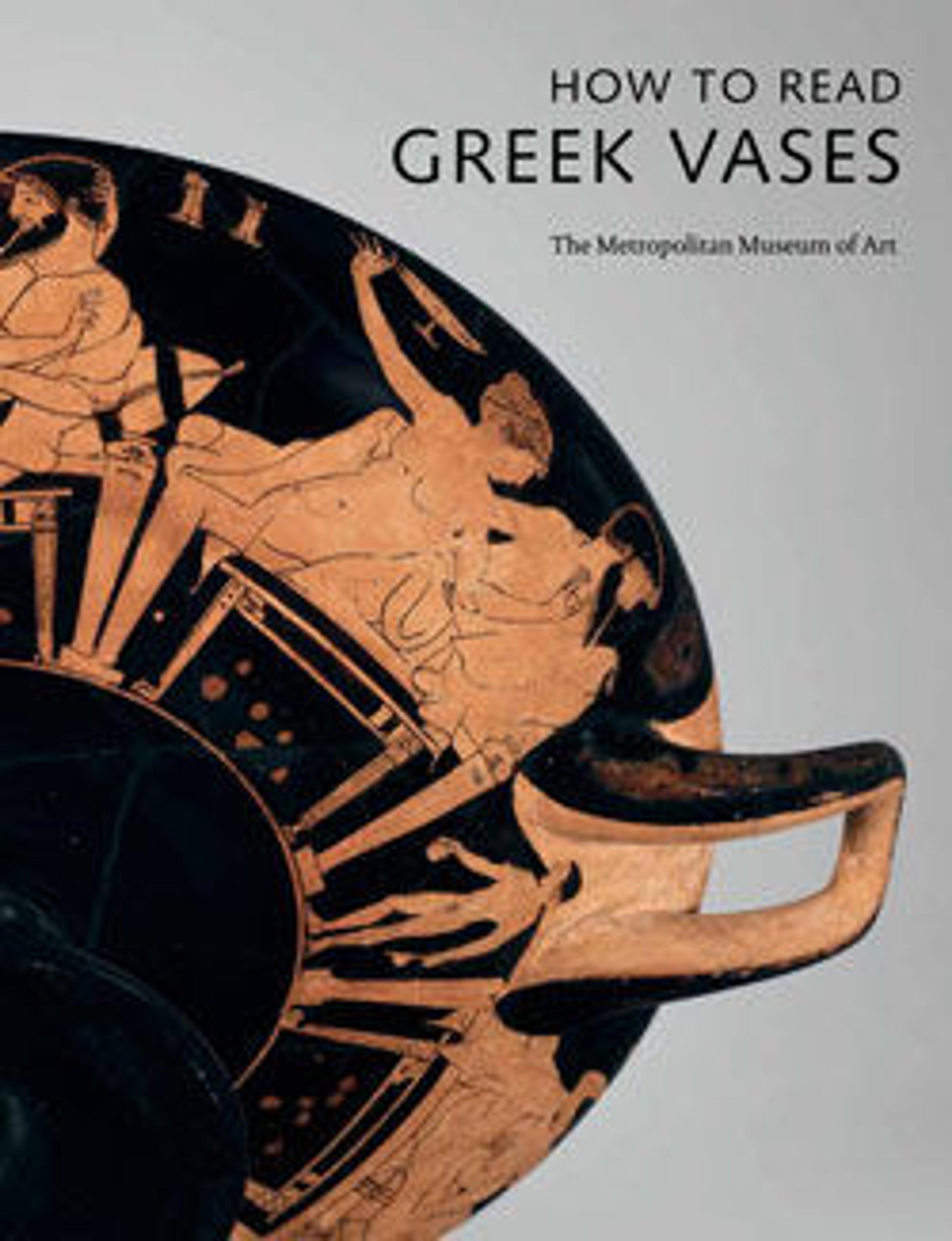Terracotta calyx-krater (bowl for mixing wine and water)
Obverse, the death and apotheosis of Herakles
Reverse, Amymone surprised by satyrs
Horribly burned by a charm that his wife gave him in a misguided attempt to revive his love, Herakles had a funeral pyre built and threw himself on it to die. In the elaborate scene on the obverse, he is already in a quadriga (four-horse chariot) driven by Nike and preceded by Hermes and is on the way to Mount Olympos, where Dionysos, Apollo, and Ares await him. Herakles leaves behind on the fire a corselet signifying the husk of his mortal self. Below, Athena urges nymphs to quench the funeral pyre. The youths are Herakles' nephew, Iolaos, the hero Philoktetes (with quiver and bow), and probably Herakles' son, Hylos.
The scene on the reverse is in rather light-hearted contrast. Beset by satyrs, Amymone is defending herself with an available thyrsos. She was finally rescued by Poseidon, who took her for himself. A spring, named after her, welled up where the god struck the ground with his trident.
The power of water clearly connects the representations on each side of the vase.
Reverse, Amymone surprised by satyrs
Horribly burned by a charm that his wife gave him in a misguided attempt to revive his love, Herakles had a funeral pyre built and threw himself on it to die. In the elaborate scene on the obverse, he is already in a quadriga (four-horse chariot) driven by Nike and preceded by Hermes and is on the way to Mount Olympos, where Dionysos, Apollo, and Ares await him. Herakles leaves behind on the fire a corselet signifying the husk of his mortal self. Below, Athena urges nymphs to quench the funeral pyre. The youths are Herakles' nephew, Iolaos, the hero Philoktetes (with quiver and bow), and probably Herakles' son, Hylos.
The scene on the reverse is in rather light-hearted contrast. Beset by satyrs, Amymone is defending herself with an available thyrsos. She was finally rescued by Poseidon, who took her for himself. A spring, named after her, welled up where the god struck the ground with his trident.
The power of water clearly connects the representations on each side of the vase.
Artwork Details
- Title:Terracotta calyx-krater (bowl for mixing wine and water)
- Period:Late Classical
- Date:4th century BCE
- Culture:Greek, Attic
- Medium:Terracotta; red-figure
- Dimensions:H. 19 9/16 in. (49.7 cm)
- Classification:Vases
- Credit Line:Purchase, Joseph Pulitzer Bequest, 1952
- Object Number:52.11.18
- Curatorial Department: Greek and Roman Art
More Artwork
Research Resources
The Met provides unparalleled resources for research and welcomes an international community of students and scholars. The Met's Open Access API is where creators and researchers can connect to the The Met collection. Open Access data and public domain images are available for unrestricted commercial and noncommercial use without permission or fee.
To request images under copyright and other restrictions, please use this Image Request form.
Feedback
We continue to research and examine historical and cultural context for objects in The Met collection. If you have comments or questions about this object record, please contact us using the form below. The Museum looks forward to receiving your comments.
